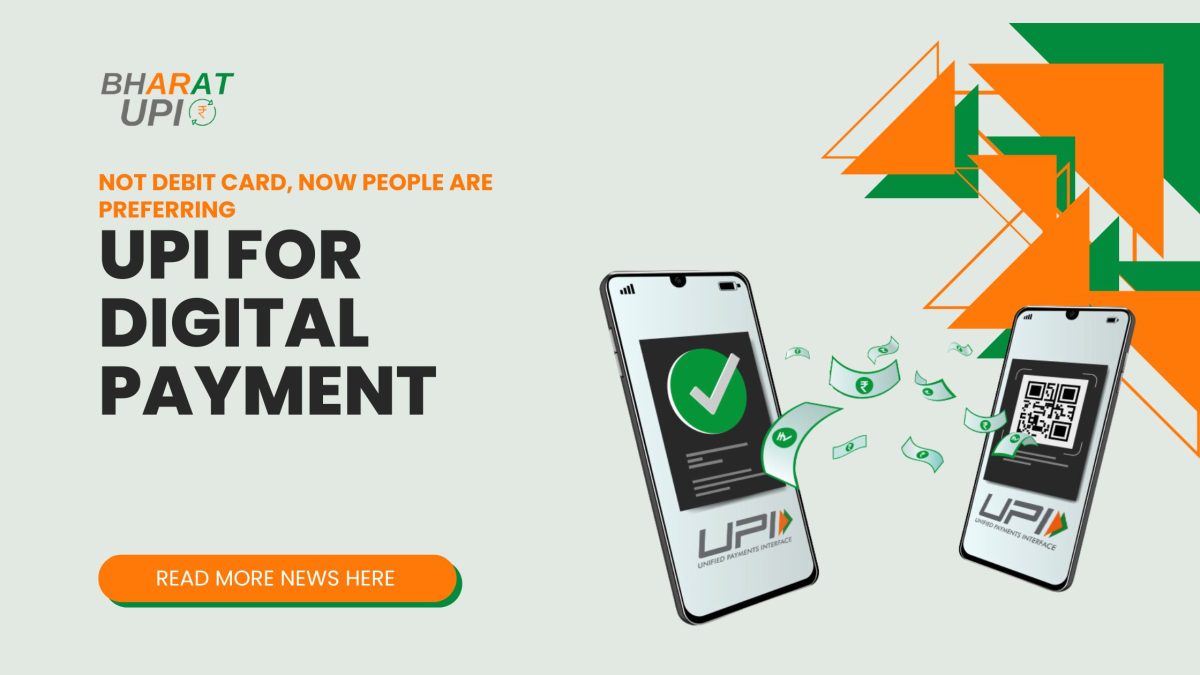The Social Impact of UPI QR Codes on Underbanked Communities
September 18, 2023The Role of AI in UPI Security Enhancements in 2024
September 21, 2023The rapid evolution of digital payments has seen a significant shift in consumer behavior towards Unified Payment Interface (UPI) as a preferred mode of transaction. This article explores the impact of this shift on traditional payment methods, particularly debit cards.
Analyzing the decline in debit card usage for online shopping and the surge in UPI payments to merchants, we examine the implications for small saving schemes and the need for adaptation by the banking sector and regulators.
As UPI gains popularity, a seamless transition to a digital-centric future becomes imperative.
Key Takeaways
- UPI is becoming the preferred payment mode for in-store shopping and peer-to-peer transactions.
- Debit card usage for e-commerce has significantly declined, while UPI payments to merchants have increased.
- Credit card transactions in e-commerce have increased and continue to grow.
- The rise of UPI may impact small saving schemes, and adjustments may be needed in policies to accommodate its popularity.
UPI as a Preferred Payment Mode
UPI is emerging as the favored payment mode for digital transactions. It is gaining popularity not only for in-store shopping but also for peer-to-peer transactions.
The rise of UPI has accelerated the decline of debit card usage for online shopping. In September, debit card usage for e-commerce websites fell by more than half compared to April last year. On the other hand, UPI payments made specifically to merchants increased almost three times during the same period.
This decline in debit card usage may impact small saving schemes, as people may prefer the convenience of UPI for transactions instead of using debit cards. The rise of UPI and the decline of debit card usage may require adjustments in small saving scheme policies, and the Reserve Bank of India may need to monitor its impact.
Decline in Debit Card Usage for E-commerce
The decline of debit card usage for e-commerce is a significant trend observed in the digital payment landscape.
In September, debit card usage for e-commerce websites fell by more than half compared to April last year. The number of debit card transactions decreased from 117 million to 51 million during this period. Additionally, the amount paid through debit cards decreased by 23%.
This decline can be attributed to the rise of UPI payments, which have become the preferred mode of payment for online shopping. UPI payments to merchants have increased almost three times in September, indicating a shift in consumer behavior.
On the other hand, credit card transactions in e-commerce have increased by 22% in September, showing that credit cards continue to grow in popularity.
The decline in debit card usage for e-commerce may have implications for the banking sector as UPI and credit cards shape the future of digital transactions.
Increase in Credit Card Transactions for E-commerce
Credit card transactions in e-commerce have experienced a notable increase, demonstrating a continued growth in popularity for this payment method. In September this year, there was a 22% rise in credit card transactions compared to April last year. The number of credit card transactions rose from 10.7 crore to 13.1 crore, with the amount spent through credit cards increasing from Rs 65,652 crore to Rs 92,878 crore during this period.
Interestingly, this increase in credit card transactions has not been affected by the rise of UPI as a preferred payment mode. While UPI has caused a decline in debit card usage for e-commerce, credit card transactions continue to grow in the sector. This trend highlights the enduring appeal and convenience of credit cards for online shoppers.
Impact on Small Saving Schemes
The rise of UPI as a preferred payment mode has the potential to disrupt small saving schemes. With people increasingly preferring UPI for their transactions, the usage of debit cards for small saving schemes is likely to decline. The convenience and ease of UPI transactions may attract more users away from debit cards when it comes to saving money. This shift in preference may require the Reserve Bank of India to closely monitor the impact of UPI on small saving schemes and make necessary adjustments to policies. To illustrate the impact, consider the following table:
| Small Saving Schemes | |
|---|---|
| Debit Card | Decreasing |
| UPI | Increasing |
| Convenience | High |
The table highlights the increasing popularity of UPI and the decreasing usage of debit cards for small saving schemes, emphasizing the convenience factor that attracts users towards UPI. As UPI continues to gain popularity, it is essential to assess its impact on small saving schemes and adapt accordingly to ensure the smooth functioning of these schemes.
Overall Digital Payment Trends
Digital payment methods, specifically UPI and credit cards, are reshaping the landscape of transactions. There has been a decline in debit card usage and a significant increase in UPI and credit card transactions.
UPI is gaining popularity as a digital payment method. It is preferred for in-store shopping, peer-to-peer transactions, and online shopping. Debit card usage for e-commerce has seen a sharp decline, falling by more than half in September.
On the other hand, credit card transactions in e-commerce have increased by 22% during the same period. The rise of UPI hasn’t affected credit card transactions, which continue to grow in the e-commerce sector. These overall digital payment trends are impacting the banking sector and may require adjustments in policies related to small saving schemes.
The convenience and popularity of UPI highlight the changing preferences of consumers towards digital payment methods.
Frequently Asked Questions
What Are Some of the Reasons Why UPI Is Becoming the Preferred Payment Mode for In-Store Shopping?
UPI is becoming the preferred payment mode for in-store shopping due to several reasons.
Firstly, UPI offers a seamless and convenient payment experience, allowing customers to make quick transactions using their smartphones.
Secondly, UPI provides enhanced security features, such as two-factor authentication, ensuring the safety of transactions.
Additionally, UPI allows for direct bank-to-bank transfers, eliminating the need for physical cards or cash.
How Has UPI Accelerated the Decline of Debit Card Usage for Online Shopping?
UPI has accelerated the decline of debit card usage for online shopping due to its convenience and ease of use. With UPI, users can make instant and seamless transactions without the need for entering card details or OTPs. This has made UPI a preferred choice for online shoppers, leading to a significant decrease in debit card transactions.
Additionally, UPI offers a wider acceptance among merchants, further driving its popularity for digital payments. The rise of UPI has reshaped the digital payment landscape, impacting the traditional usage of debit cards for online transactions.
What Are the Specific Reasons Behind the Increase in Credit Card Transactions for E-Commerce?
The increase in credit card transactions for e-commerce can be attributed to several factors.
Firstly, credit cards offer a convenient and secure payment method for online shopping. They provide consumers with the ability to make purchases and pay later, which can be appealing.
Additionally, credit cards often come with rewards programs and cashback offers, incentivizing their use in e-commerce transactions.
Finally, credit cards offer a higher spending limit compared to debit cards, allowing consumers to make larger purchases online.
These factors contribute to the growth of credit card transactions in the e-commerce sector.
How Might the Rise of UPI and Decline of Debit Card Usage Impact Small Saving Schemes?
The rise of UPI and the decline in debit card usage may have implications for small saving schemes. With people preferring UPI for digital payments, there is a possibility that they may choose UPI over debit cards for transactions related to small saving schemes.
The convenience and popularity of UPI could attract more users away from debit cards for these schemes. As a result, the Reserve Bank of India may need to monitor the impact of UPI on small saving schemes and consider adjustments to policy if necessary.
What Are Some Potential Implications of the Decline in Debit Card Usage for the Banking Sector?
The decline in debit card usage may have several implications for the banking sector.
Firstly, banks may need to adapt their strategies to cater to the changing preferences of customers who are increasingly favoring UPI for digital payments. This may involve enhancing their UPI offerings and integrating it with their existing services.
Secondly, banks may also need to reassess their revenue streams as the decline in debit card usage could impact their transaction fee income.
Lastly, banks may need to invest in technology and infrastructure to support the growing demand for UPI transactions and ensure seamless user experience.
Conclusion
In conclusion, the rapid rise of Unified Payment Interface (UPI) as a preferred mode of transaction has resulted in a decline in debit card usage for online shopping.
However, credit card transactions in e-commerce have experienced growth, indicating that UPI’s rise has not impacted this payment method.
It is important for the banking sector and regulators to adapt to these changing trends and ensure a seamless transition to a more digital-centric future.




